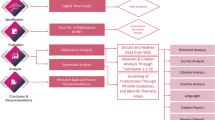Abstract
In this paper, we outline how we have developed a series of technologies that enable planning information to be disseminated to affected citizens so that professionals and politicians can engage with these stakeholders in realizing more effective plans. Our main theme is based on the generic idea of the “virtual city” which is conceived in terms of the geography and geometry of the real city. This is a digital representation using a variety of software and multimedia, made interactively available over the web. We begin with a brief comment on different types of virtual city and then summarize the key problems of using such virtualities in public participation, more recently considered as part of the e-democracy movement. We outline our previous attempts to engage in such online participation in east London for these have been an essential prerequisite to the development of “Virtual London,” the application reported here which is currently being fashioned for widespread dissemination of planning information by the Greater London Authority (GLA). We then argue that virtual cities should go well beyond the traditional conceptions of 3D GIS and CAD into virtual worlds and online design. But we also urge caution in pushing the digital message too far, showing how more conventional tangible media is always necessary in rooting such models in more realistic and familiar representations.
Similar content being viewed by others
References
Arnstein, S.R. (1969). “A Ladder of Citizen Participation,” Journal of the American Institute of Planners, 35, 216–224.
Batty, M., Chapman, D., Evans, S., Haklay, M., Kueppers, S., Shiode, N., Smith, A., and Torrens, P. (2001). “Visualizing the City: Communicating Urban Design to Planners and Decision-Makers, in R. Brail and R. Klosterman (Eds.), Planning Support Systems: Integrating Geographic Information Systems, Models, and Visualization Tools, ESRI Press, Redlands, CA, 405–443.
Batty, M., Dodge, M., Doyle, S., and Smith, A. (1998). Modelling Virtual Environments, in P.A. Longley, S. Brooks, R. McDonnell, and B. Macmillan (Eds.), Geocomputation: A Primer, John Wiley and Sons, Chichester, UK, 139–161.
Batty, M., and Hudson-Smith, A. (2001). Virtuality and Cities: Definitions, Geographies, Designs, in P.F. Fisher, and D.B. Unwin (Eds.), Virtual Reality in Geography, Taylor and Francis, London, 270–291.
Baudrillard, J. (1994). Simulacra and Simulation, University of Michigan Press, Ann Arbor, MI.
Calvino, I. (1974). Invisible Cities, Harcourt Brace and Company, San Diego, CA.
Dutton, W.H., Blumler, J.G., and Kraemer, K.L. (1987). Wired Cities: Shaping the Future of Communications, G. K. Hall, Boston, MA.
GLA. (2003). Londoners On-Line: An Analysis of Levels of Home Internet Access from the London Household Survey 2002, Greater London Authority, Queens Walk, London.
Graham, S. (2004). The Cybercities Reader, Routledge, London.
Hudson-Smith, A. (2003). Digitally Distributed Urban Environments: The Prospects for Online Planning, unpublished Ph.D. thesis, University of London, London.
Hudson-Smith, A., Evans, S., Batty, M., and Batty, S. (2003) “Experiments in Web-Based GIS,” in P.A. Longley and M. Batty (Eds.), Advanced Spatial Analysis: The CASA Book of GIS, ESRI Press, Redlands, CA, 369–390.
Kingston, R. (2002). “Web-Based PPGIS in the United Kingdom,” in W.J. Craig, T.M. Harris, and D. Weiner (Eds.) Community Participation and Geographic Information Systems, Taylor and Francis, London, 101–112.
MHLG. (1969). People and Planning, Report of the Committee on Public Participation in Planning (The Skeffington Report), Ministry of Housing and Local Government (MHLG), HMSO, London.
Negroponte, N. (1973). The Architecture Machine, MIT Press, Cambridge, MA.
OED. (1974). The Concise Oxford Dictionary, Oxford University Press, Oxford, UK.
Schroeder, R., Huxor, A., and Smith, A. (2001). “ActiveWorlds: Geography and Social Interaction in Virtual Reality,” Futures, 33, 569–587.
Shiffer, M.J. (2001). “Spatial Multimedia for Planning Support,” in R. Brail and R. Klosterman (Eds.), Planning Support Systems: Integrating Geographic Information Systems, Models, and Visualization Tools, ESRI Press, Redlands, CA, 361–385.
Smith, A. (2002) 30 Days in ActiveWorlds: “Community, Design and Terrorism in a Virtual World,” in R. Shroeder (Ed.), The Social Life of Avatars: Presence and Interaction in Shared Virtual Environments, Springer, Berlin, 77–89.
Thrift, N. and French, S. (2002). The Automatic Production of Space, Transactions of the Institute of British Geographers, NS 27, 309–335.
Author information
Authors and Affiliations
Additional information
He has pioneered various multimedia, virtual reality methods 3D GIS, and CAD for problems of public participation in planning. He is currently the director of the Greater London Authority’s Virtual London project within CASA. Amongst his recent contributions, he has published (with S. Evans, M. Batty, and S. Batty) “Community Participation in Urban Regeneration Using Internet Technologies,” in London: A Sustainable World City and “30 Days in ActiveWorlds: Community, Design, and Terrorism in a Virtual World,” in The Social Life of Avatars, Presence and Interaction in Shared Virtual Environments.
Stephen Evans is also a senior research fellow at CASA. His background is in GIS and he has worked on several projects including LEO—London Environment Online, PROPOLIS—the development of GIS interfaces to urban land use transportation models, and currently on the Virtual London and Camden Panoramas projects. Amongst his recent work, he has published (with P. Steadman) “Interfacing Land-Use Transport Models with GIS: The Inverness Model,” in Advanced Spatial Analysis: The CASA Book of GIS and (with A. Hudson-Smith and M. Batty) “Homes in Hackney Point to the Future,” Planning, 12 July 2002.
Michael Batty is professor of Spatial Analysis and Planning and director of CASA. He has a joint appointment between the Department of Geography and the Bartlett School of Architecture and Planning. His books range from Urban Modelling to Fractal Cities. He is editor of Environment and Planning B. The work of his group can be seen at 〈http://www.casa.ucl.ac.uk〉 and in the recent book Advanced Spatial Analysis. He was elected a Fellow of the British Academy in 2001 and was awarded the CBE for “services to geography” in 2004.
Rights and permissions
About this article
Cite this article
Hudson-Smith, A., Evans, S. & Batty, M. Building the virtual city: Public participation through e-democracy. Know Techn Pol 18, 62–85 (2005). https://doi.org/10.1007/s12130-005-1016-9
Issue Date:
DOI: https://doi.org/10.1007/s12130-005-1016-9




